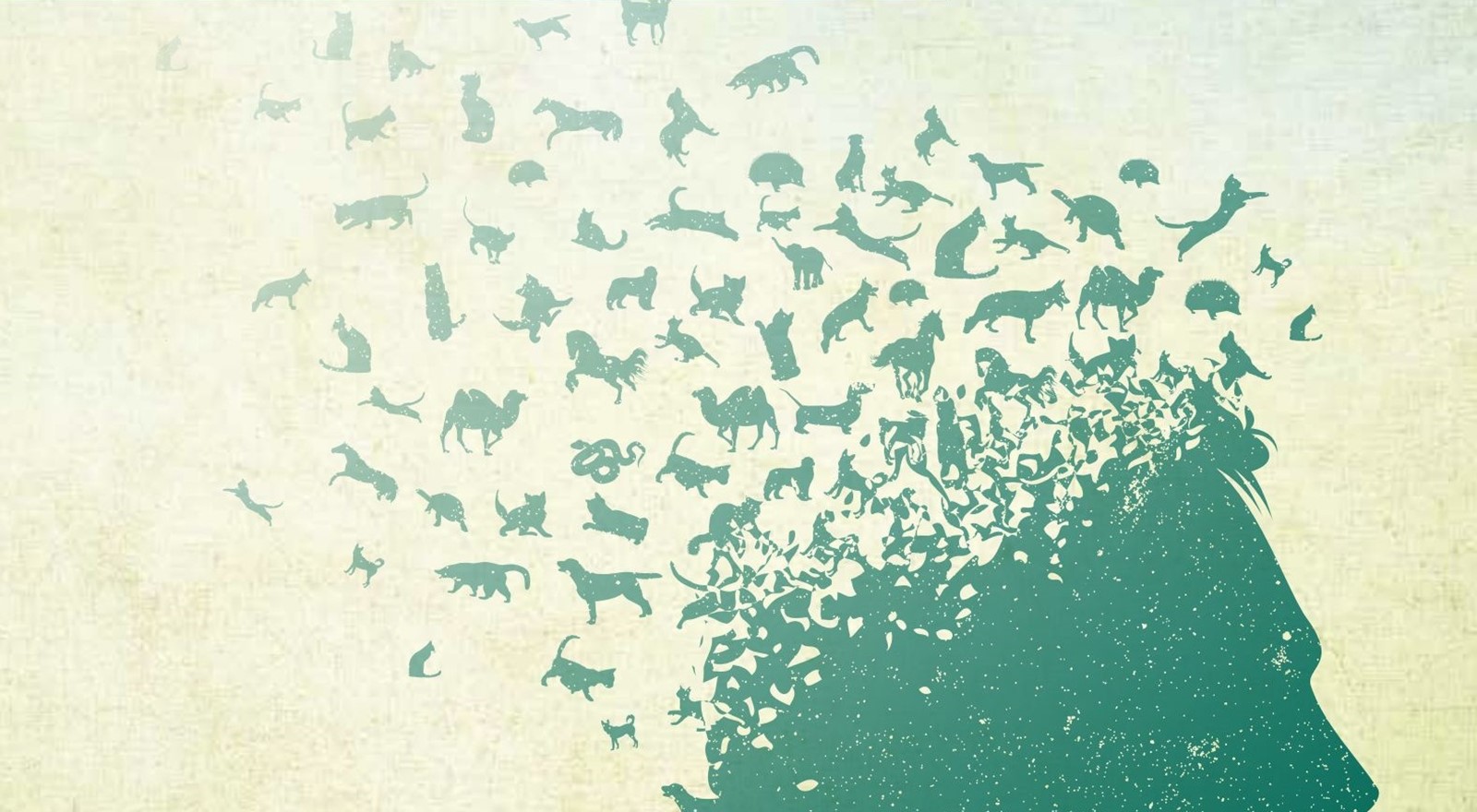In my book, Stillness in Mind,1 I tell a story about a traveller, a buddha* and a sage. It could be seen as a metaphor for the therapeutic passage and I would like to quote it here as a stepping off point:
"One day a buddha was sitting by a lake, looking out across the still water. It was a fine day and there was the gentlest whisper of a breeze, just enough so that the sun didn’t feel too hot, just enough to rustle the grass growing at the water’s edge, just enough to raise the smell of the warm baked earth into the air, just enough to carry the faintest tinkle of goat bells from the hills in the distance, just enough for all those things to be with the buddha as he sat by the lake… just enough and no more.
As he was sitting, a traveller came along the path and stopped a few paces away. The traveller waited for the buddha to look up and greet him, but the buddha just sat looking out across the lake. After a while the traveller noticed himself becoming irritated and then annoyed and in the end quite angry, until he could contain himself no longer and burst out to the quietly sitting buddha: ‘What is this? Here we are, the only two people for miles around and you haven’t even the common courtesy to pass the time of day.’ The buddha replied: ‘Sit here awhile and let the breeze take away your anger. You are angry because you think you are important. But here there is nothing more important than the breeze.’
The traveller was puzzled by this answer, but he felt uncomfortable for shouting at the stranger, so he sat and waited, and little by little they came to him – the sun just warm, the rustling of the grass, a smell of baked earth, goat bells tinkling in the distance. As the sun passed overhead he felt calm and rested and refreshed so that finally he decided he would continue his journey. He got up and started to walk away from the buddha, who was still sitting. And the buddha said: ‘Will you not take your leave?’ The traveller replied: ‘There is no-one to take leave.’
A little further on, the traveller could see ahead and noticed that his path was soon to be joined by another and, glancing across to where the other path was approaching, he could see an old man walking steadily in the same direction. He looked wise, like an elder of some ancient faith. A few minutes more and their steps coincided on what now became one path. This time the traveller felt no irritation or awkwardness as he silently fell in step beside his new companion. In a little while the silence was broken. ‘You have come from the buddha’, said the sage. ‘How do you know that?’ asked the traveller. ‘Everyone who comes along this path has passed the buddha.’ After a few moments the sage spoke again:
‘What did you learn?’
‘I learnt about stillness and about being one in the world.’
‘And will you hold on to that?’
‘I will try.’
‘And how will your "one in the world" encounter others?’
The traveller fell silent. Before he had sat with the buddha, he could have answered that, but now nothing from before seemed to fit. The sage stopped walking and turned towards the lake. ‘Look at the lake’, he said. ‘What colour is it?’ ‘Blue,’ answered the traveller. The sage walked on. ‘No, the lake is a mountain tarn, it is very deep and in its depths there is no light. The lake is black, it is the sky which is blue. So does the sky make the lake blue? The sky is just there, it knows nothing of the lake. The lake knows nothing of the sky. But being together they are blue.’
As the sage talked, they had come to where the path became two again. The sage took one and the traveller knew he must take the other. After a few steps, the sage looked across to him, raised his hand in farewell and said: ‘Sometimes being, just being, with another, is enough.’
Metaphor for the therapeutic journey
The practice of meditation and the process of therapy have many similarities. The essential feature of both is that the client spends reflective time with themselves, facilitated by a therapist in counselling, or their own heightened awareness in meditation. My argument in this article, and the approach to therapeutic meditation that underlies it and which I practise in my counselling and retreat work, is that there is a complementarity between psychological therapy and meditation (the client’s and our own) that enriches the passage of therapy, deepening and sometimes quickening its insights.
The story is a metaphor in three ways for the therapeutic passage and its prerequisites:
- the client feels themselves to be a traveller and their therapy journey to be a passage
- a new kind of awareness is a necessary condition for their growth out of the prison in which their dysfunction has confined them
- relation, in all its aspects, is the essential ingredient for a flow of living, for simply being human, for ‘feeling OK’
The possibility of therapy
In On Becoming a Person, Rogers characterises the client at the first stage of therapy: ‘The individual has little or no recognition of the ebb and flow of the feeling of life within him. The ways in which he construes his experience have been set by his past, and are rigidly unaffected by the actualities of the present.’2 The manifestation of this is a client’s lack of ability to separate from their issue, to the point where conversation leads ineluctably back there. The separateness that allows a sense of the ‘ebb and flow’ of life and for us to be open to stimulus, reaction and response, has been closed off. Living, which draws its vitality and flow from change and renewal, has stagnated and all process become circular. We could characterise this as a total unawareness of anything outside of oneself. With this invariably goes a belief that nothing will change, because this same lack of awareness has taken away with it any understanding of the fact that all things, by their very nature, are constantly changing. All sense of passage and travelling through has been lost.
Whether we express it as being the result of the conditions of a relationship not normally experienced, the challenging of a fundamental irrational belief, or the uncovering of a first element of transference, the fostering of the client’s ability to find space for non-obsessional process is vital as a first step. When this comes it might be evidenced by an occasional self-reflective comment, a hint of observer and observed, a dissonance the client remarks on themselves; but underlying such glimpses will be an awareness of themselves in another aspect or with differentiated intensity.
The shifted self-reflection is a result of the ability to be mindful, though for ‘mindfulness’ I prefer the translation of the French version: ‘full awareness’. The ability to let thoughts dissolve and to become aware of other sensations and stimuli from inside our body and around us in our world, without casting everything in a negative light, is an aspect of the separation that clients must achieve between themselves and their issue. It is achieved through techniques to dissipate the content of thoughts without negating the process of thinking, an attention to one’s senses and an ability to intentionally notice and hold one’s focus. This can be taught from a basic level in the therapy room.
Relating: the core of all our being
While full awareness or mindfulness is a necessary ability to facilitate a fruitful meditation practice, and will also facilitate the separateness that is a precondition for the client to progress, mindfulness is not meditation, and separateness per se is not the effective outcome of therapy.
If we accept, with Buber,3 that real living cannot happen for human beings as isolated beings, that in order to be fully human, people must enter into relation; if we accept too that entering into relation requires genuine dialogue, which presupposes a ‘turning to the other’ that entails accepting them in the completeness of their independence and individuality – then the process of any therapy must embrace fully the implication of Buber’s philosophy of dialogue. The full implication of Buber’s differentiation of ‘monologue’, ‘dialogue which is really monologue’, and ‘genuine dialogue’, can inform even person-centred counsellors such as myself with nuances and subtleties that enhance our practice of the core conditions. And his insight that, with any communication that is not ‘genuine dialogue’, the speaker’s ‘I’ is always ‘I-It’, is illuminating. The inescapable result of this – that everything around the speaker is then their ‘realm’, defined in form and function and used (even manipulated) to confirm their identity and self-concept – is both helpful and uncomfortable.
Buber wrote as a philosopher, not as a therapist. He was not therefore looking to derive the sources of dysfunction in humankind and link them to a theory of the person – a sort of ‘top down’ analysis – but rather to understand the nature of being and living as a person. In the company of others of our species, our most common activity is communication. The nature of our dialogue is the most basic indicator of the process of relating. In communicating we indicate an awareness of ourselves, our ‘I’, which Buber calls ‘the primary word’, being either ‘I-It’ (if our communication is ‘monologue’ or ‘dialogue which is really monologue’), or ‘I-Thou’ (if our communication is ‘genuine dialogue’). Relating, in Buber’s sense, only happens through the genuine dialogue of ‘I-Thou’. It occurs with the reciprocity that comes from the turning to the other in complete acceptance of their individuality as a separate person, and it brings about a meeting in which for both there is a wishing to give and a willingness to receive. This is at the heart of his much-quoted phrase: ‘All real living is meeting.’**
On first hearing, it can seem paradoxical that relating in this sense predicates separateness. But the reciprocity, which is the core process of relating, can only exist between two individuals who are separate from each other on account of the other’s ‘I-Thou’.
Meditation following the Western psychotherapeutic discourse
It is the separation in the client from absorption in their issue and pathology, helped by developing full awareness (mindfulness), together with the intentional separateness in genuine dialogue that I use in the Clear Space Meditation Path that I teach to complement my counselling work.
In the setting of meditation, the other with whom the ‘dialogue’ can develop is ourselves, or more precisely an aspect of ourselves or our lives. If we sit in that state of altered consciousness, marked by a consistent dissolving of thoughts and with our attention open to the immediate and the present, we free space for our minds to reach to our edge of awareness, referred to by Gendlin as ‘felt-sense’.4 Gendlin observed that if we develop a means to name and give form to these unclear ‘senses of something’, which are neither fully cognitive nor completely bodily sensation and are defined by their edge rather than their shape – if we patiently focus on their fuzzy indistinctness, then the feeling of realisation that comes with their metamorphosis into objects of consciousness, causes a shift of insight which he calls a ‘process step’.
In meditation, while we are quietly abiding in the clear space of dissolved thoughts, there can arise a sense that is not purely cognitive and comes with an immediacy that sets it apart from the thought threads whose content is either historical or fantasy. Sometimes it can come suddenly with a word, but more often it has all of the lack of clarity that Gendlin puts in to ‘felt-sense’. When training students and therapists recognise this, I suggest that it might contain glimpses of situations and people, snatches of sounds or voices, swellings of emotion, sensations not fully experienced. In its way it has more completeness than an object we might look at, because it comprises more than the forms we see with our eyes. We might give it a description – a word, sound or colour – but we resist making it concrete, we restrain our urge to tell a story about it. Like the other for an ‘I-Thou’, we allow it to be what it is, without judgment – bad or good – and in this way, as observer and observed, we open up the possibility of genuine dialogue with a part of ourselves. To describe what emerges as ‘dialogue’ is perhaps misleading because it implies something akin to the script for a play. In short bursts it may appear like this, but more often the communicating seems to have a quality like surges of feeling passed through and received. A meta-view might offer the aspect of this ‘sense of something’ arising from clear space, as the client with an empathic companion alongside, turning towards them, simply reflecting, in the manner of an observer who is acting as a mirror for the other.
Emerging process
The client for whom an introduction to the proposition of full awareness has suggested a possible aptitude for meditation, does not have to be given the theoretical framework and its derivation, with references to the work of Buber, Gendlin and Rogers, through whose insights it has been constructed. Assuming that the therapist is able to speak from their own practice and experience, everyday descriptions can be used and introduced in stages. The strength of the approach is that it offers a therapeutic process alongside the therapy, a process that resonates with the culture of our own practice, whether or not the therapist’s modality is humanistic. (At the most fundamental level, the ‘givens’ of how we understand the proposition of therapy in our culture are common across modalities.) And what emerges from this dual track is not necessarily specific content brought into the counselling session, though it may be, but rather an increased openness in the client through a greater ease with their environment, and themselves in their environment.
While our recovered clients might not use the traveller’s words in the story – ‘There is no-one to take leave’ – their sense of being a part of the world around, rather than apart from that world, would mean to most of us that their lives had taken a meaningful and positive turn.
*I use ‘buddha’ with a small ‘b’ to convey an individual with buddha nature, the term which in that belief system indicates one who has attained enlightenment. For the same reason I talk about ‘a’ buddha.
**For a full sense of the true impact of ‘Thou’, we need to recall Buber’s insistence that a genuine dialogue of ‘I-Thou’ can happen even between individuals who view each other negatively, in a way that it cannot between those who are simply indifferent.3
Simon Cole is a BACP senior accredited counsellor. He worked as a trainer, supervisor and counsellor within the NHS and privately, and now runs a retreat centre in France, where he incorporates mindfulness, meditation and nature into his therapy. He is author of Stillness in Mind: a companion to mindfulness, meditation and living (Changemakers Books 2014).
www.life-counselling.co.uk
More from Private Practice

Demystifying the media
Open article: Working with the media can be a powerful addition to your marketing toolkit. Ruth Clowes explains the available options and advises on how to put a media campaign into action. Private Practice, Summer 2015

Helping clients help themselves
Open article: Influential CBT therapist Christine Padesky aims to put herself out of business by teaching people skills they can use to help themselves. Private Practice, Spring 2015

Accepting uncertainty
Open article: In his closing keynote at the 2014 BACP Private Practice conference on anxiety, James Davies spoke of his concern that there is excessive deference to a model of mental health in which ordinary human experience is reduced to diagnoses to be medicalised and medicated. Private Practice, Winter 2014
References
1. Cole S. Stillness in mind: a companion to mindfulness, meditation and living. Winchester and Washington: Changemakers Books; 2014.
2. Rogers C. On becoming a person: a therapist’s view of psychotherapy. London: Constable & Company; 1961.
3. Buber M. Between man and man. Boston: Beacon Press; 1947.
4. Gendlin ET. Focusing-oriented psychotherapy: a manual of the experiential method. New York and London: Guilford Press; 1996.
